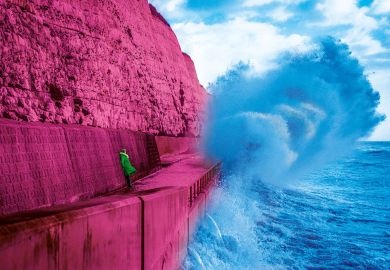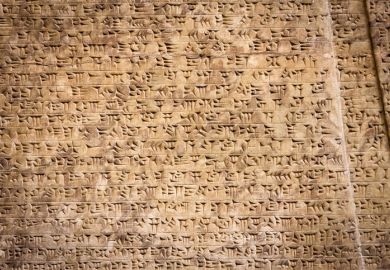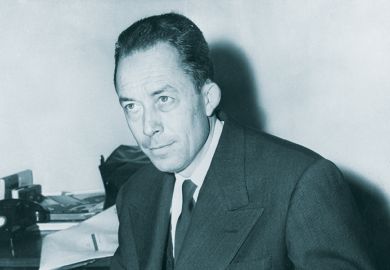When Seamus Heaney published The Spirit Level in 1996, it was his first new collection in five years. This is a perfectly reasonable time to take to compile a book of poems, if not one calculated to please the publishers of a recently named Nobel laureate. Luckily for them, Heaney is now so active not just as a poet but as a critic, translator and anthologist that readers have been able to hear from him at much more regular intervals. In the last three years alone, in addition to The Spirit Level there have been a volume of essays (The Redress of Poetry), his translations from the Polish (Laments, with Stanislaw Baranczak), a second anthology with Ted Hughes (The School Bag), and now Opened Ground. Having published a New Selected Poems in 1990 and reluctant to canonise himself with a Collected just yet, he has produced a volume that falls somewhere between the two. Though almost 500 pages long, Opened Ground contains little previously uncollected work.
The volume begins with many of the poems for which Heaney is still best-known, including "Digging", "Mid-Term Break", "Personal Helicon", "Thatcher", "Requiem for the Croppies" and "Bogland". Of emblematic interest to the young Heaney are figures such as the thatcher and diviner whose folk wisdom and skill become models for the poems in which they are celebrated. The encounter with nature too is presented in terms of a wisdom to be acquired, as in "Death of a Naturalist" when Heaney's delight in the frogspawn he brings to school is tempered by his stumbling on a field of threatening and sexual bull frogs, "poised like mud grenades, their blunt heads farting". The schoolboy loses his innocence but gains an awareness of the countryside as a place of predatory animal and sexual energy, powerfully captured in what Philip Hobsbaum has called the "snap, crackle and pop" of Heaney's onomatopoeic style. His trust in his early subject matter may have been enabled by Patrick Kavanagh, but from the outset there is a technical sophistication that far exceeds that of the earlier poet. Drawing on William Carlos Williams and Robert Lowell, Heaney honed a masterly short-line quatrain which, with its often jerky line-breaks, would serve him well in the vacillations and agonisings of Wintering Out and North. His vocabulary abounds in compound words or kennings, dialect forms and archaisms. The most successful of these early poems are those in which he explores the conflicts and tensions within the small rural communities he paints, and the solitude and menace that lie beyond their confines, poems such as "Servant Boy", "The Peninsula", "Limbo" and "Bye-Child".
Nomen est omen could serve as a motto to much of Heaney's work. Many poems from Death of a Naturalist to North contain images of the land being mastered or appeased through an act of male penetration such as digging, but mastery of the place-name becomes the surest index of connection to the soil in a well-known poem like "Broagh". A heelmark in the soil becomes "the black O // in Broagh" among a clump of rhubarb-blades that end "almost / suddenly, like that last / gh the strangers found / difficult to manage." English lacks this particular velar consonant, though German or Dutch-speakers would have no problems with it, suggesting that Heaney has a very specific group of "strangers" in mind. This gesture of linguistic exclusion could seem mean-spirited until one grasps that the difficult Irishness of the sound is shared by Catholics and Protestants alike, making it a unifying rather than a divisive shibboleth of their Ulster identity. Yet it remains a purely linguistic token of shared belonging, a mere gesture towards the larger sense of community that it is precisely the non-"strangers" who find most difficult to enunciate.
It was the paralysis and impotence of the larger community against the worst excesses of the Northern Irish troubles that prompted Heaney to write North (1975), still his most controversial volume almost a quarter-century after its publication. The similarities or otherwise between Northern Ireland and Iron Age Jutland are finally less important for North than those of the contemporary poet and the anthropologist, and the ethics of being a bystander to a conflict in which one feels helpless to intervene. Its strict non-interventionism is both its strength and its weakness. The volume's best poems are those least given to looking nervously over their shoulders at the effect they are having on the reader, such as the beautiful "Sunlight" with its description of an aunt baking: here is a space/ again, the scone rising/ to the tick of two clocks./ And here is love/ like a tinsmith's scoop/ sunk past its gleam/ in the meal-bin.
North remains a bravura gesture within the Heaney canon, although his next volume, Field Work (1979), surpasses it for sheer poetic power. This was followed by Sweeney Astray (1983) and the Dantean Station Island (1984). Although not his best book, the collection that inaugurates his current phase is The Haw Lantern, "Heaney's first book of the virtual" as Helen Vendler calls it. In its approach to politics The Haw Lantern looks for other ways of addressing the Northern Irish conflict than the book-length allegories of North and Station Island. Heaney broadens his thematic range through parable poems such as "The Mud Vision" and "The Frontier of Writing", which not only use translation as a metaphor but display the strong influence of translations from Zbigniew Herbert and Czeslaw Milosz. This pared-down style assists Heaney to put a new distance between himself and the uncomfortable tribal intimacies of North, while also finding a language for the miraculous, which plays an increasing role in his recent work. Seeing Things and The Spirit Level both aim for an unencumbered airiness of tone, reflected in Heaney's attempts to cast off his celebrated, statesman-like impartiality.
Heaney's recent work shows a similar impatience with false expectations of his role as a public commentator. When a Republican brusquely asks him in The Flight Path: "When, for ****'s sake, are you going to write / Something for us?" Heaney retorts: "If I do write something, / Whatever it is, I'll be writing for myself." But for all his new-found freedom he has yet to give his huge readership the sort of shock Yeats gave his with some of his later volumes. Unlike Yeats or his younger contemporary Paul Muldoon, Heaney is not a writer to risk outrageous bad taste in pursuit of the outre or the uncharted. This made for an overly Parnassian tone in The Spirit Level, despite individually marvellous poems such as "Two Lorries", "Mint" and "Postscript". Having gathered so much that is uncontestable in Opened Ground, so much that has lodged itself unbudgeably in the canon, now might be the ideal time in Heaney's for a period of carefree experiment.
Neil Corcoran's The Poetry of Seamus Heaney: A Critical Study has been updated from 1986 to deal with Seeing Things and The Spirit Level; revisions have also been made to earlier chapters. It remains the best complete survey of Heaney's work, ahead of Michael Parker's better documented but critically unadventurous Seamus Heaney: The Making of a Poet. Like Helen Vendler, Corcoran is no literary theorist, but in marked contrast to the American critic engages with and concedes the strength of David Lloyd's notorious theoretical reading before stating what he believes (surely correctly) to be its grave shortcomings. Corcoran's own readings are rarely controversial, coming close at times to a Heaneyesque quality of impartiality, but his skill as a close reader of poetry is manifest throughout. Each collection is read thematically, with short sub-sections addressing all the well-known Heaney themes from politics and sexuality to elegies, self-scrutiny, the visionary and the mundane. He is good on Heaney's influences and borrowings: from Robert Lowell in Field Work, Elizabeth Bishop in his use of the sestina, and T. S. Eliot as a model for the poet-critic or poeta doctus.
Vendler's study, titled simply Seamus Heaney, is a very different sort of book. As Heaney's most influential champion in the United States, she has written at a far remove from the local intensity of Irish critics arguing over his mythologizing of violence in North. She refuses to read the poems as "statements of a political position", though only the most simplistic of theorists would claim that Heaney's poetry is reducible to a set of political opinions. Nevertheless, when she reads North as a study of a "generalized cultural approval of violence, dating back many centuries" Vendler is arguing for a depoliticisation of that volume that robs it of much of its power to provoke as well as merely to reassure; and it is a measure of Heaney's stature that he thrives on being read in just such a provoked or provocative way. Vendler's Heaney, in other words, is a much more New Critical creature than Corcoran's. As a New Critical reading her book can hardly be faulted, with some of its best pages devoted to Heaney's self-revisions. But as Corcoran shows, a more wide-ranging approach need not mean a surrender to the blandness of literary theory, and it is to Corcoran's book that students will be more likely to turn.
David Wheatley is author of Thirst.
Seamus Heaney
Author - Helen Vendler
ISBN - 0 00 255856 4
Publisher - HarperCollins
Price - £15.99
Pages - 188
Register to continue
Why register?
- Registration is free and only takes a moment
- Once registered, you can read 3 articles a month
- Sign up for our newsletter
Subscribe
Or subscribe for unlimited access to:
- Unlimited access to news, views, insights & reviews
- Digital editions
- Digital access to THE’s university and college rankings analysis
Already registered or a current subscriber? Login



